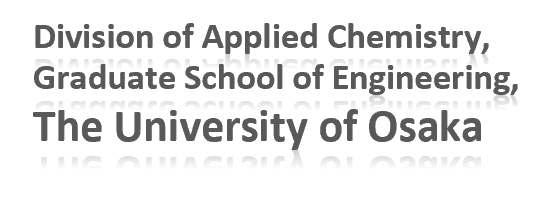1: Efficient conversion of CO2, lower alkanes, and nitrogen
2: Multimetallization of alloys and ceramics for higher functionality
3: Elucidating reaction mechanisms by experiment and theory
4: Unconventional molecular transformation using electric energy
We are developing innovative catalysts that can efficiently promote these reactions, mainly targeting reactions of high social importance to convert CO2, nitrogen, and lower alkanes (the main component of shale gas) into higher value-added molecules.
One example is propane dehydrogenation, which is one of the methods used to produce propylene, a key substance in the chemical industry. In this reaction, the catalyst is deactivated when carbonaceous species is deposited on the catalyst due to side reactions, making it difficult to ensure long-term durability (actually, the catalyst is regenerated every several hours in industry).
In contrast, we have succeeded in developing a propane dehydrogenation catalyst that exhibits remarkable durability and functions stably for one month even under severe reaction conditions by using a new catalyst design concept that makes full use of alloy materials. (the world-record performance).
Novel catalyst design concept
"surface decoration of intermetallics"
Double-decoration of the surface and
vicinity of PtGa with Pb and Ca
・Blocks the active site (Pt3)
that causes side reactions.
・Enhances the active site for
dehydrogenation (Pt1)
Nature Commun., 2020, 11, 2838., PCT/JP2022/008760.
Angew. Chem. Int. Ed., 2021, 60, 19715-19719.
Effective utilization of CO2 is also a very important issue to break away from dependence on fossil resources and to achieve carbon neutralization in the chemical industry. We are working on the development of high-performance catalysts that can convert CO2 into CO and alcohols with high efficiency.
In particular, the oxidative dehydroegnation of propane, in which propane dehydrogenation is performed oxidatively using CO2, has been attracting attention in recent years as an innovative technology that can simultaneously achieve propylene production, effective CO2 utilization, and the carbon neutralization of existing dehydrogenation processes.
C3H8 + CO2 → C3H6 + CO + H2O
In contrast, we have succeeded in developing a ternary alloy catalyst consisting of Pt, Co, In that exhibits the world's highest performance for this reaction in terms of (1) catalytic activity, (2) propylene selectivity, (3) durability, and (4) CO2 utilization efficiency, making it an amazingly high-performance catalyst. Alloy materials are suitable for controlling catalytic performance and enhancing functionality because multiple elements can be mixed in various proportions.
Advantages of alloy catalysts
Multiple functions can be
adjacent at the atomic level
"Construction of a
superior active site"
Pt: C-H activation of C3H8
Co: C=O activation of CO2
In: Inhibiting side reactions
(C–C cleavage)
Nature Catal., 2022, 5, 55-65., WO patent: PCT/JP2022/008760
While a combination of two or three elements can produce excellent performance in alloy catalysts, more advanced functions and properties can be obtained by increasing the number of elements to five or six. Solid solution alloys consisting of five or more elements are called high-entropy alloys, and are known to be excellent catalysts due to the high thermal stability derived from mixed entropy and multifunctional properties derived from multiple metals.
We have developed a new material called "high-entropy intermetallics" (HEI), which is a kind of high-entropy alloy having an ordered structure, and found that it can function as an extremely high-performance catalyst.
"ordered structure" + "multimetallization"
"fine control"×"multifunctioality"×"stability"
= innovative active sites
For example, by partially replacing the Pt and Ge sites of PtGe, a binary ordered alloy (intermetallic compound), with elements (Co/Cu and Ga/Sn) that are close to each other on the periodic table, the alloy can be multimetallized while maintaining the specific crystal structure and atomic arrangement derived from PtGe. Since the ordered structure is retained, precise design of the active site is possible.
This HEI catalyst: (PtCoCu)(GeGaSn) has shown remarkable durability in propane dehydrogenation, functioning stably for two months at 600°C, and has succeeded in breaking the world record mentioned above by itself. A similar functionalization has also been successfully applied to the catalytic system of the oxidative dehydrogenation using CO2 to improve durability and reusability.
In addition, we are also working to improve the catalytic function of ceramic materials, mainly metal oxides, as well as alloys, using the multimetallization strategy.
Nature Commun., 2022, 13, 5065.
J. Am. Chem. Soc., 2022, 144, 15944.
Angew. Chem. Int. Ed., 2022, 61, e20220889.
In our laboratory, we also try to thoroughly elucidate fundamental questions such as "why good catalysts are good" and "why bad catalysts are bad". This is because understanding the causes of these problems will give us "hints for developing better catalysts". As an approach to this, we use not only experiments but also theoretical calculations to elucidate the reaction mechanisms and principles on catalysts at the atomic and orbital levels.
For instance, for the PtCoIn system described above, we have shown that the addition of Co to PtIn significantly lowers the energy barrier of CO2 activation (see figure above), and that the Co3d orbital contributes to this lowering. In addition to this, we have also studied the function of Pd-Au alloys, an industrial catalyst for the synthesis of vinyl acetate monomer, the raw material for synthetic resins, and have succeeded in reaching a clear conclusion about the role of Au and KOAc, which has been disputed for decades. (see figure below).
Nature Catal., 2022, 5, 55-65.
J. Am. Chem. Soc., 2023, 145, 2985.
・・・ under construction ・・・
Division of Applied Chemistry,
Graduate School of Engineering,
The University of Osaka
Furukawa Laboratory
2-1 Yamadaoka, Suita, Osaka, Japan 565-0871
C5-531 (room) Tel: 06-6879-7808
mail: furukawa [at] chem.eng.osaka-u.ac.jp

© Furukawa Lab.
Division of Applied Chemistry,
Graduate School of Engineering,
The University of Osaka. All Rights Reserved.

